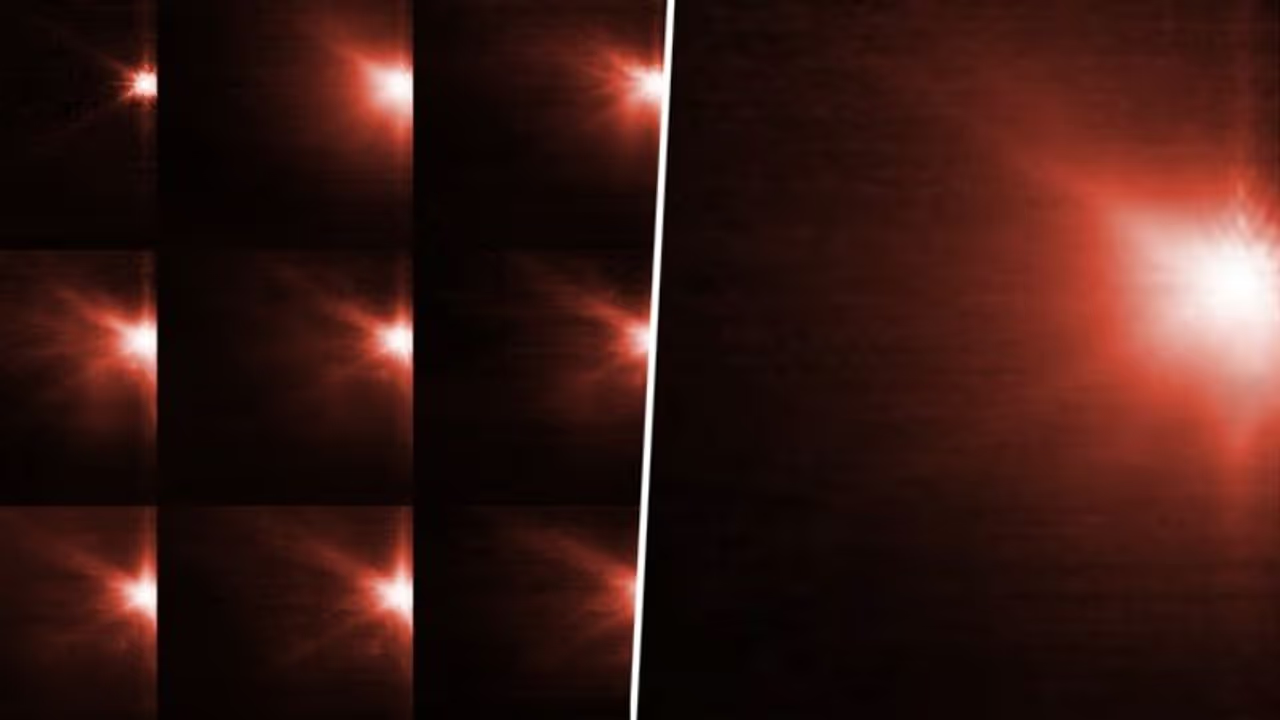NASA's James Webb Space Telescope and the Hubble Space Telescope were able to see the first ever in-space test for planetary defence, which included deliberately crashing a spaceship with a tiny asteroid. DART deliberately slammed with the asteroid Dimorphos, which is around 9.6 million kilometres from Earth, at a speed of 22,500 km/h.
Two NASA space observatories, the James Webb Space Telescope and the Hubble Space Telescope, took images of the DART spacecraft deliberately colliding with an asteroid earlier this week.

On Tuesday, NASA's Double Asteroid Redirection Test (DART) purposely collided with asteroid Dimorphos 9.6 million kilometres from Earth, crashing at 22,500 kilometres per hour. The project was the world's first in-space planetary defence test. According to the US space agency, it was also the first occasion that the Hubble Space Telescope and the James Webb Space Telescope saw the same celestial target at the same time.
NASA reported on Instagram that the photographs and videos captured by James Webb's near-infrared camera indicate a tight, compact core with "plumes of material looking like wisps flowing away" from the impact site.
Also Read | DART mission step towards preparing world for potential future asteroid strike: Indian scientists
Observing the Dart Mission impact with Webb was likewise described as a "special task" by the space agency. "Asteroid Dimorphos moved over at a speed over 3 times faster than the original speed limit Webb was designed to track! In the weeks leading up to the impact, teams carefully tested how they would accomplish the task," it added in the caption.
Also Read | Russia, United States, China among the biggest contributors to waste in space: Study
According to NASA, the Hubble telescope collected photographs taken 22 minutes, five hours, and 8.2 hours following the impact. Photos acquired by Hubble's wide field camera 3 reveal the mission's impact in visible light. "Hubble's images show the movement of ejecta from Dimorphos after impact. The ejecta appear as rays stretching out from the asteroid," the caption of the Instagram post read.
According to NASA, data from Webb and Hubble combined will allow scientists to learn more about the characteristics of Dimorphos' surface, how much material was expelled by the impact, and how quickly it was ejected. Combining this data with observations from ground-based telescopes will help scientists understand how successfully a kinetic hit may change an asteroid's orbit, according to a news release from NASA.
Also Read | NASA's DART spaceship successfully strikes asteroid in first planetary defence test
